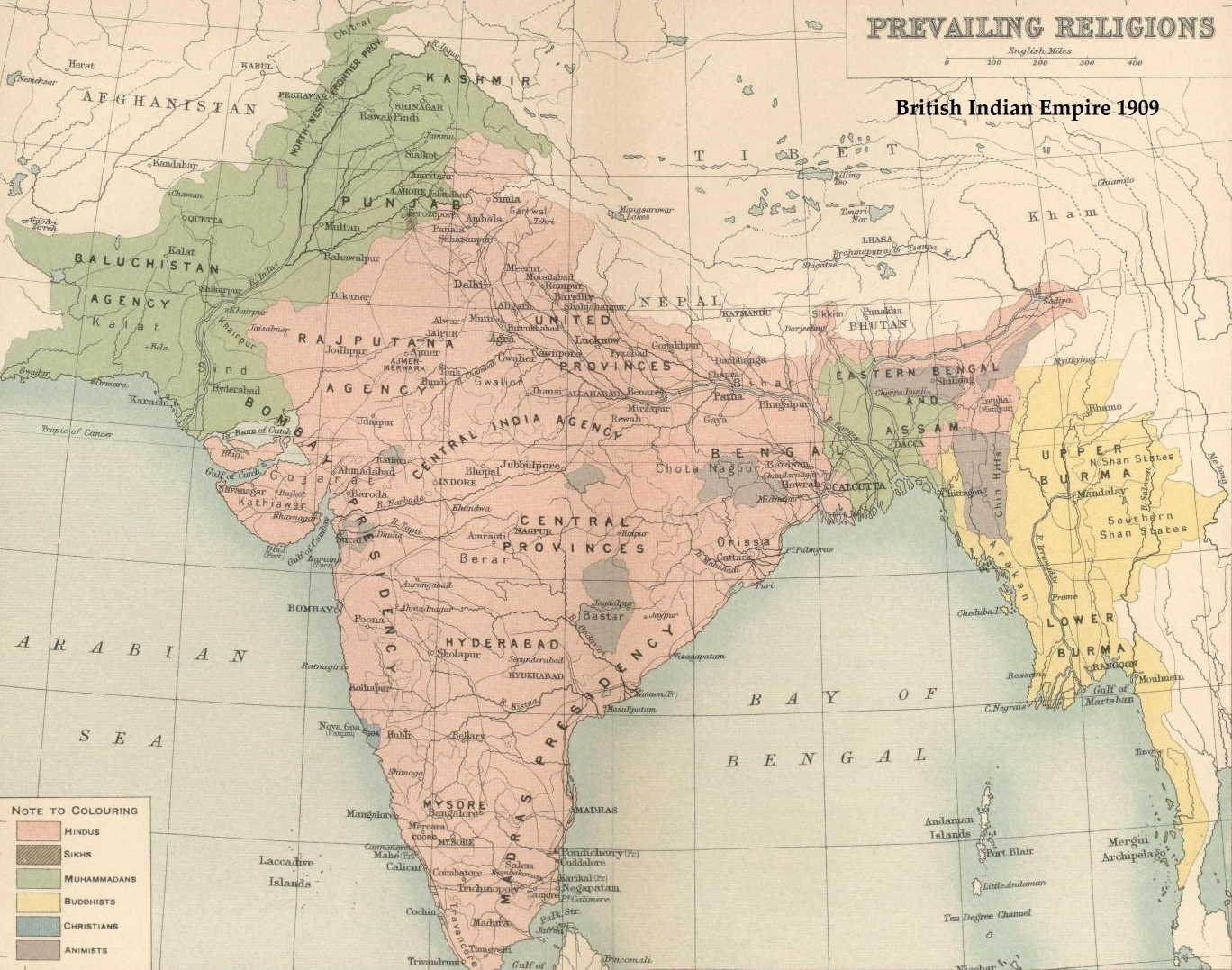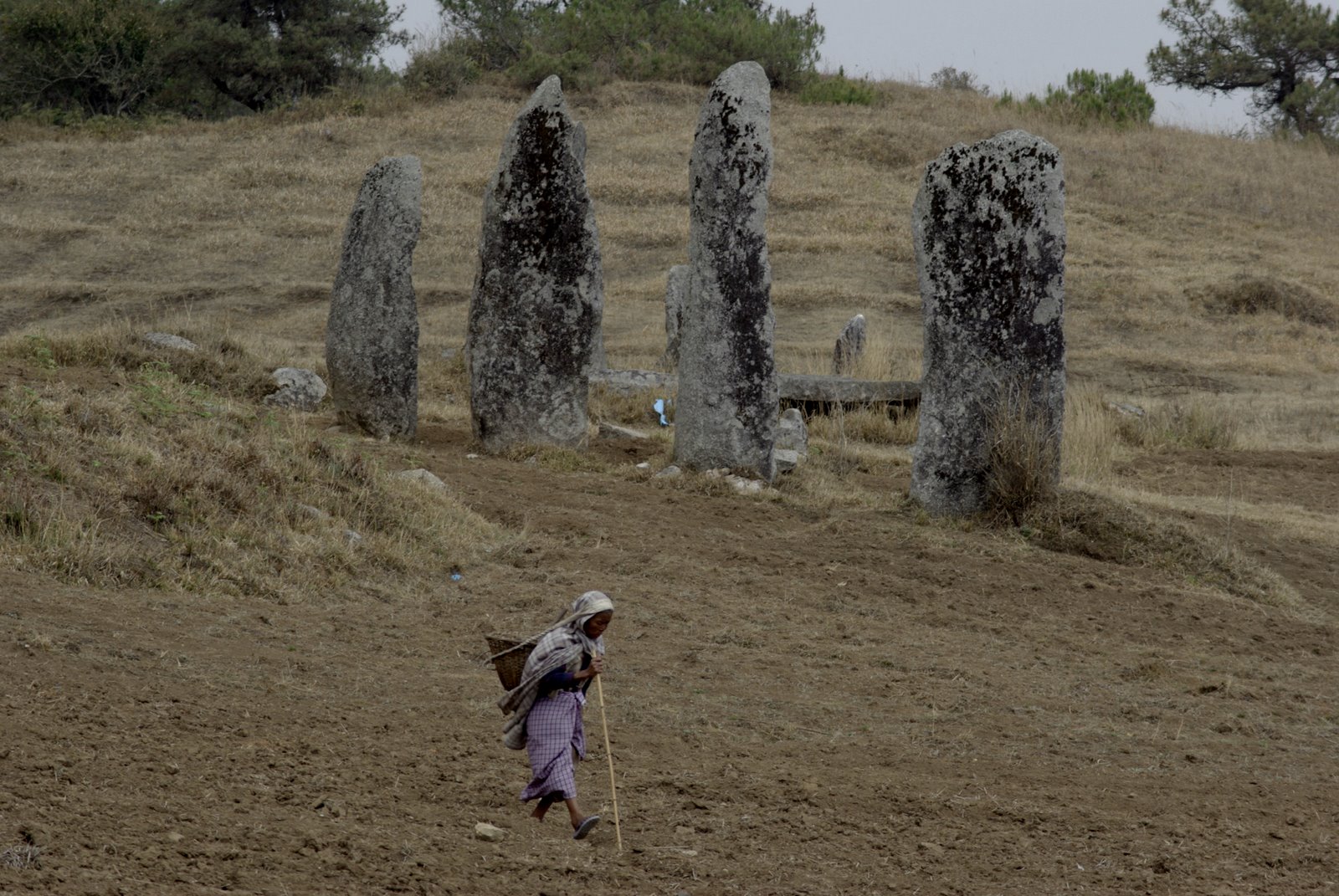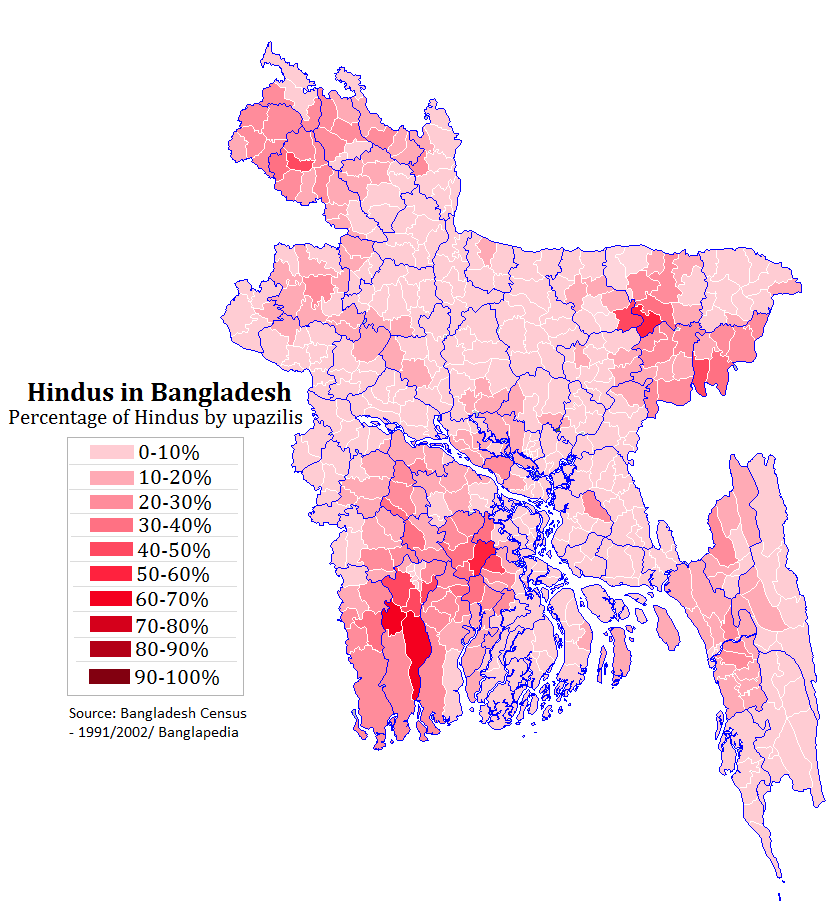|
Gowainghat Upazila
Gowainghat () is an upazila of Sylhet District in the Division of Sylhet, Bangladesh. History The British Empire conquered the Jaintia Kingdom on 25 March 1835, finally incorporating Gowainghat in its Sylhet District Collectorate. In 1908, the Gowainghat Thana was founded with the union of 5 parganas; Dhargram, Araikha, Piyaingul, Panchbhag and Jaflong and then separated into 9 union councils. During the Bangladesh Liberation War, the Pakistani army launched an attack in Ujuhat, Alirgaon killing 25 freedom fighters on the night of 28 November 1971. 7 mass graves are found in the upazila in Ujuhat, Atgram, Tamabil Zero Point, Health Complex and Birkuli. To commemorate the loss of lives, a memorial has been built. The thana prospered, officially upgrading to an upazila on 14 March 1983. Geography Gowainghat is located at . It has 47,992 households and a total area of 481.12 km2. The rivers are quarried for their stones, in areas like Bichnakandi. Demographics According to ... [...More Info...] [...Related Items...] OR: [Wikipedia] [Google] [Baidu] |
Upazilas Of Bangladesh
An ''upazila'' ( pronounced: ), formerly called ''thana'', is an administrative division in Bangladesh, functioning as a sub-unit of a districts of Bangladesh, district. It can be seen as an analogous to a county or a borough of Western countries. Rural upazilas are further administratively divided into Union councils of Bangladesh, union council areas (union parishads). Bangladesh has 495 upazilas. The upazilas are the second lowest tier of regional administration in Bangladesh. The administrative structure consists of divisions (8), districts (64), upazilas (495) and union parishads (UPs). This system of devolution was introduced by the former military ruler and president of Bangladesh, Hossain Mohammad Ershad, Lt-Gen Hossain Muhammad Ershad, in an attempt to strengthen local government. Below UPs, villages (''gram'') and ''para'' exist, but these have no administrative power and elected members. The Local Government local ordinance, Ordinance of 1982 was amended a year lat ... [...More Info...] [...Related Items...] OR: [Wikipedia] [Google] [Baidu] |
Bangladesh Liberation War
The Bangladesh Liberation War (, ), also known as the Bangladesh War of Independence, was an War, armed conflict sparked by the rise of the Bengali nationalism, Bengali nationalist and self-determination movement in East Pakistan, which resulted in the independence of Bangladesh. The war began when the Pakistani Military dictatorship, military junta based in West Pakistan—under the orders of Yahya Khan—launched Operation Searchlight against East Pakistanis on the night of 25 March 1971, initiating the Bangladesh genocide. In response to the violence, members of the Mukti Bahini—a Guerrilla warfare, guerrilla resistance movement formed by Bengali military, paramilitary and civilians—launched a mass guerrilla war against the Pakistan Armed Forces, Pakistani military, liberating numerous towns and cities in the war's initial months. At first, the Pakistan Army regained momentum during the monsoon, but Bengali guerrillas counterattacked by carrying out widespread sabotag ... [...More Info...] [...Related Items...] OR: [Wikipedia] [Google] [Baidu] |
Dildar Hossain Selim
Dildar Hossain Selim (13 November 1950 – 5 May 2021) was a Bangladesh Nationalist Party politician who served as Jatiya Sangsad member from Sylhet-4. Early life Dildar Hossain Selim was born on 13 November 1950 in the village of Radhanagar in Gowainghat Upazila of Sylhet. His father Idris Ali Chowdhury was a doctor and his mother Akhlaqun Nesha was a housewife. Selim's grandfather's house is in Bishwanath Kamil Nagar Deokals Union. His father started his career in Jaflong Tea Garden Hospital in the service of the British government and settled in Radhanagar. His wife Jebunnahar Selim is a lawyer. He is the father of two daughters and a son. The children live in America. His youngest daughter is a US Attorney and a UK Barrister. He and his wife lived in Lama Bazar area of Sylhet. Career Selim was involved in left politics at the beginning of his political career. He was the Central Co-Organizing Secretary of the Bangladesh Nationalist Party. He was GS and VP of MC College St ... [...More Info...] [...Related Items...] OR: [Wikipedia] [Google] [Baidu] |
Faizul Hasan
Faizul Hasan () was a Bangladeshi politician. Biography Hasan was born into a Bengali Muslim family from Daubari in Gowainghat, Sylhet District. He was successful in a 1956 by-election for the East Bengal Legislative Assembly. Hasan participated in the 1973 Bangladeshi general election as a National Awami Party candidate but reached third place, losing to Habibur Rahman of the Awami League The Awami League, officially known as Bangladesh Awami League, is a major List of political parties in Bangladesh, political party in Bangladesh. The oldest existing political party in the country, the party played the leading role in achievin .... References {{DEFAULTSORT:Hasan, Faizul Politicians from East Pakistan People from Gowainghat Upazila Politicians from Sylhet Division 20th-century Bengalis ... [...More Info...] [...Related Items...] OR: [Wikipedia] [Google] [Baidu] |
Abdul Hannan (politician)
Abdul Hannan (1 January 1938 – 1 October 2009) was a politician of Sylhet district of Bangladesh and former member of parliament for the Sylhet-4 constituency in 1988. Birth and early life M.A. Hannan was born on 1 January 1938 in the village of Birkuli in Gowainghat upazila of Sylhet district (now Bangladesh) in Assam, British India. He completed his primary education in his village and passed matriculation from Gowainghat High School in 1952. He passed HSC from MC College in 1954 and BA degree in 1958. After that he was admitted to Dhaka University in 1958 in LLB. Political life Abdul Hannan made a significant contribution to the language movement in 1952. He was the founding president of Gowainghat Awami League. He took active part in the liberation war of Bangladesh. He was elected chairman of Tokul Union No. 8 of Gowainghat Upazila three times in a row from 1973 to 1983. He was elected to parliament from Sylhet-4 as an independent Independent or Independents may ref ... [...More Info...] [...Related Items...] OR: [Wikipedia] [Google] [Baidu] |
Saiful Alom
Muhammad Sayful Alam (; 7 March 1934 – 14 January 1997) was a Bangladeshi politician and teacher. He was a member of the East Pakistan Legislative Assembly. He had made extensive contributions to the overall development of Gowainghat Upazila. Early life and education Sayful Alam was born on 7 March 1934, to a Bengali Muslim family in Purnanagar, Gowainghat, located in the Sylhet district of the British Raj. The family may have originally been from the nearby village of Rautgram in West Alirgaon Union. He passed his Intermediate of Arts in 1954, and earned his Bachelor of Arts two years later. Career Alam began his career as a teacher at the Gowainghat High School for two years. His entrance to politics started at the Basic Democracy elections held in 1959 under Ayub Khan's military rule. He became a member initially, and then later the uncontested chairman of the constituency. Alam participated in the May 1962 Basic Democracy elections, becoming a member of the East Pakis ... [...More Info...] [...Related Items...] OR: [Wikipedia] [Google] [Baidu] |
Union Parishad
Union council (), also known as union parishad, rural council, rural union and simply union, is the smallest rural administrative and local government unit in Bangladesh, with zila parishads (district councils) being the largest rural authorities and upazila parishads (sub-district council) being the intermediate level. A union council, headed by a chairperson, consists of nine wards. These wards serve the purpose of electing members for general seats, with three additional seats reserved for women, all of which are directly elected. Union councils are formed under the ''Local Government (Union Parishads) Act, 2009''. The boundary of each union council is demarcated by the deputy commissioner of the district. Union councils are responsible for various development tasks, including agriculture, education, health, infrastructure, and sanitation. They also oversee administrative duties like birth registration, census activities, and maintaining civil status registers. Addition ... [...More Info...] [...Related Items...] OR: [Wikipedia] [Google] [Baidu] |
Census
A census (from Latin ''censere'', 'to assess') is the procedure of systematically acquiring, recording, and calculating population information about the members of a given Statistical population, population, usually displayed in the form of statistics. This term is used mostly in connection with Population and housing censuses by country, national population and housing censuses; other common censuses include Census of agriculture, censuses of agriculture, traditional culture, business, supplies, and traffic censuses. The United Nations (UN) defines the essential features of population and housing censuses as "individual enumeration, universality within a defined territory, simultaneity and defined periodicity", and recommends that population censuses be taken at least every ten years. UN recommendations also cover census topics to be collected, official definitions, classifications, and other useful information to coordinate international practices. The United Nations, UN's Food ... [...More Info...] [...Related Items...] OR: [Wikipedia] [Google] [Baidu] |
Khasi People
The Khasi people are an Austroasiatic languages, Austroasiatic Ethnicity, ethnic group of Meghalaya in north-eastern India with a significant population in the bordering state of Assam and in certain parts of Bangladesh. Khasi people form the majority of the population of the eastern part of Meghalaya, that is Khasi Hills, constituting 78.3% of the region's population, and is the state's largest community, with around 48% of the population of Meghalaya. They are among the few Austroasiatic languages, Austroasiatic-speaking peoples in South Asia. The Khasi tribe holds the distinction of being one of the few remaining tribes that have a matrilineal society. Under the Constitution of India, the Khasis have been granted the status of Scheduled Castes and Scheduled Tribes, Scheduled Tribe. Etymology History Khasi mythology Khasi mythology traces the tribe's original abode to ("The Seven Huts"). According to the Khasi mythology, (God, the Lord Master) had originally distribute ... [...More Info...] [...Related Items...] OR: [Wikipedia] [Google] [Baidu] |
2011 Bangladesh Census
In 2011, the Bangladesh Bureau of Statistics conducted a national census in Bangladesh, which provided a provisional estimate of the total population of the country as 142,319,000. The previous decennial census was the 2001 census. Data were recorded from all of the districts and upazilas and main cities in Bangladesh, including statistical data on population size, households, sex and age distribution, marital status, economically active population, literacy and educational attainment, religion, number of children etc. Bangladesh and India also conducted their first joint census of areas along their border in 2011. According to the census, Hindus constituted 8.5 per cent of the population as of 2011, down from 9.6 per cent in the 2001 census. Bangladesh has a population of 144,043,697 as per the 2011 census report. The majority of 130,201,097 reported that they were Muslim, 12,301,331 reported as Hindu, 864,262 as Buddhist, 532,961 as Christian and 201,661 as others. See als ... [...More Info...] [...Related Items...] OR: [Wikipedia] [Google] [Baidu] |
Hinduism In Bangladesh
Hinduism is the second largest religion in Bangladesh, as according to the 2022 Census of Bangladesh, approximately 13.1 million people responded as Hindus, constituting 7.95% of the nation. Bangladesh is the third-largest Hindu populated country in the world, after India and Nepal. Hinduism is the Religion in Bangladesh, second-largest religion in 61 of 64 districts in Bangladesh, but there are no Hindu majority districts in Bangladesh. Demographics According to the 2001 Bangladesh census, there were around 11.82 million Hindus in Bangladesh constituting 9.6% of the population, which at the time was 123.15 million. The 2011 Bangladesh census, Bangladesh 2011 census states, that approximately 12.73 million people responded that they were Hindus, constituting 8.54% of the total 149.77 million. While 2022 Census of Bangladesh, put the number of Hindus in Bangladesh at 13.1 million out of total 165.1 million population, thus constituting 7.95% of the population. According to ... [...More Info...] [...Related Items...] OR: [Wikipedia] [Google] [Baidu] |
Islam In Bangladesh
Islam is the largest and the state religion of the People's Republic of Bangladesh. According to the 2022 census, Bangladesh had a population of about 150 million Muslims, or 91.04% of its total population of million. Muslims of Bangladesh are predominant native Bengali Muslims. The majority of Bangladeshis are ''Sunni'', and follow the '' Hanafi'' school of ''Fiqh''. Bangladesh is a ''de facto'' secular country. The Bengal region was a supreme power of the medieval Islamic East. In the late 7th century, Muslims from Arabia established commercial as well as religious connection within the Bengal region before the conquest, mainly through the coastal regions as traders and primarily via the ports of Chittagong. In the early 13th century, Muhammad bin Bakhtiyar Khalji conquered Western and part of Northern Bengal and established the first Muslim kingdom in Bengal. During the 13th century, Sufi missionaries, mystics and saints began to preach Islam in villages. The Islamic ... [...More Info...] [...Related Items...] OR: [Wikipedia] [Google] [Baidu] |



